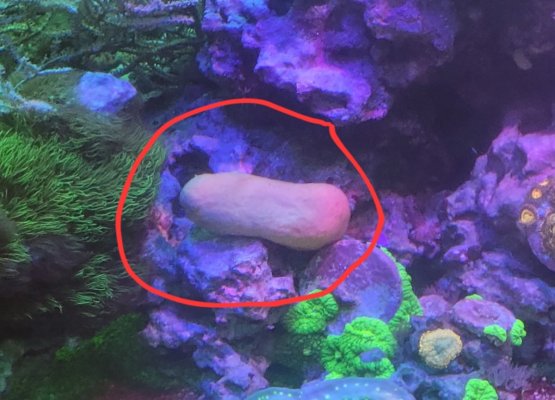Navigation
Install the app
How to install the app on iOS
Follow along with the video below to see how to install our site as a web app on your home screen.

Note: This feature currently requires accessing the site using the built-in Safari browser.
More options
You are using an out of date browser. It may not display this or other websites correctly.
You should upgrade or use an alternative browser.
You should upgrade or use an alternative browser.
Unique sponge ID please
- Thread starter SimonMo
- Start date
ISpeakForTheSeas
2500 Club Member
- Review score
- +0 /0 /-0
R2R Supporter
R2R Excellence Award
- Joined
- Nov 22, 2021
- Messages
- 3,058
- Reaction score
- 3,640
- Review score
- +0 /0 /-0
- Location
- United States
Sponge ID can be incredibly difficult (see the quote below), but maybe a Chicken Liver Sponge (Chondrosia sp. or Chondrilla sp.)? If not, pics of the sponge from different angles under white light may (or may not) be helpful.
Welcome to Reef2Reef!
The quote referenced above:
Welcome to Reef2Reef!
The quote referenced above:
Pineapple sponges are from the genus Sycon - The more common pineapple sponges in our tanks can pretty easily be ID’ed by sight (short, round, spiky/fuzzy, has a little spiky crown/funnel looking thing around the opening). Some other pineapple sponge species are much harder to differentiate, and - like many (likely most) sponge species alive - may require microscopic examination and/or DNA testing to actually ID accurately. These sponges in the pics are fuzzy, but they lack the typical “pineapple crown” around the opening, so, they might be pineapple sponges or they might not.
Personally, I wouldn’t feel comfortable giving an ID beyond just saying they’re sponges, as these ones just don’t have enough obviously unique characteristics that I can see to ID from.
Anyway, here’s a good Sponge ID resource for anyone who’s interested- as mentioned, though, sometimes DNA is the best indicator for telling sponges apart:
And, here’s a decent example of why sponge ID by non-microscopic sight is not always reliable:
Upvote
0
Thank you for the answerSponge ID can be incredibly difficult (see the quote below), but maybe a Chicken Liver Sponge (Chondrosia sp. or Chondrilla sp.)? If not, pics of the sponge from different angles under white light may (or may not) be helpful.
Welcome to Reef2Reef!
The quote referenced above:
PS I' m not a native speaker so I apologise for my language mistakes
Attachments
-
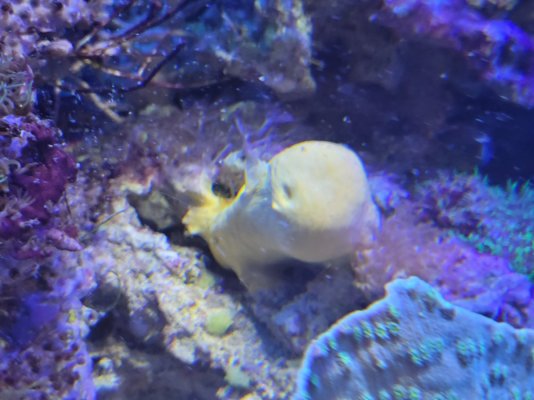 20230417_184115.jpg151.6 KB · Views: 14
20230417_184115.jpg151.6 KB · Views: 14 -
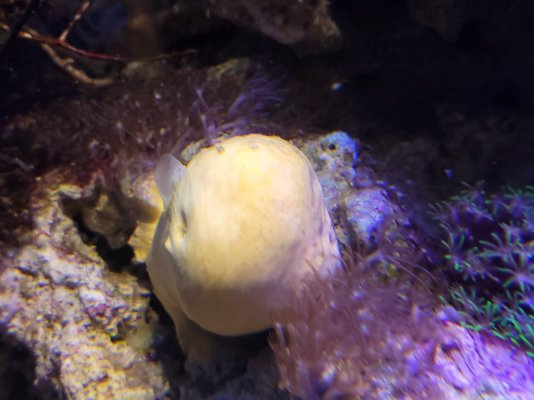 20230417_184155.jpg124.3 KB · Views: 16
20230417_184155.jpg124.3 KB · Views: 16 -
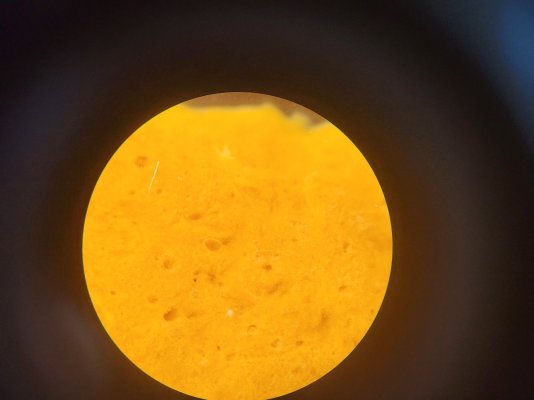 20230417_185038.jpg91.4 KB · Views: 19
20230417_185038.jpg91.4 KB · Views: 19 -
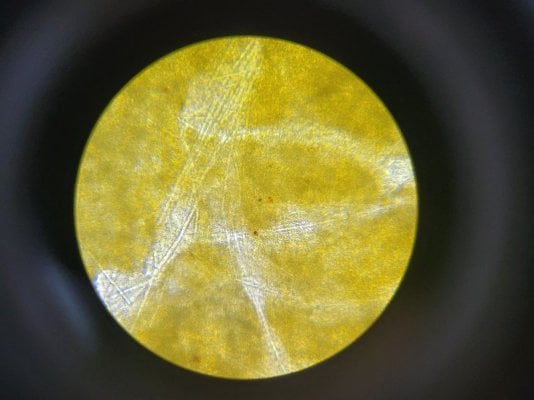 20230417_185721.jpg163.4 KB · Views: 19
20230417_185721.jpg163.4 KB · Views: 19 -
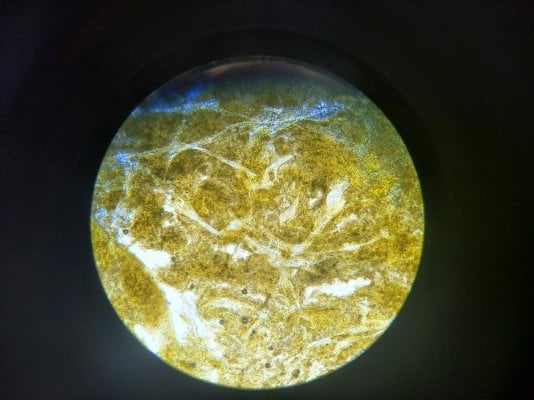 20230417_190005.jpg222.6 KB · Views: 21
20230417_190005.jpg222.6 KB · Views: 21 -
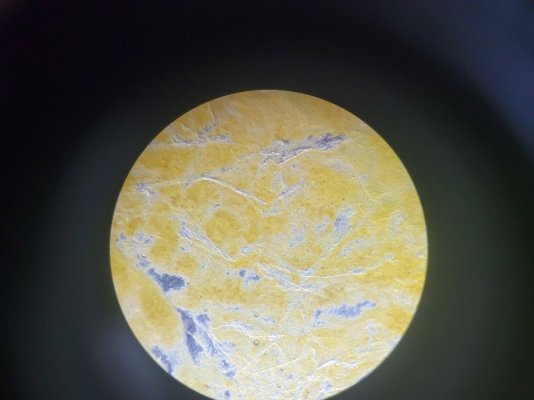 20230417_190028.jpg126.5 KB · Views: 15
20230417_190028.jpg126.5 KB · Views: 15 -
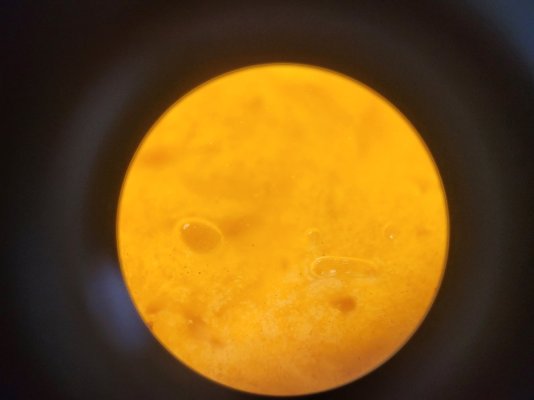 20230417_185111.jpg79.1 KB · Views: 15
20230417_185111.jpg79.1 KB · Views: 15 -
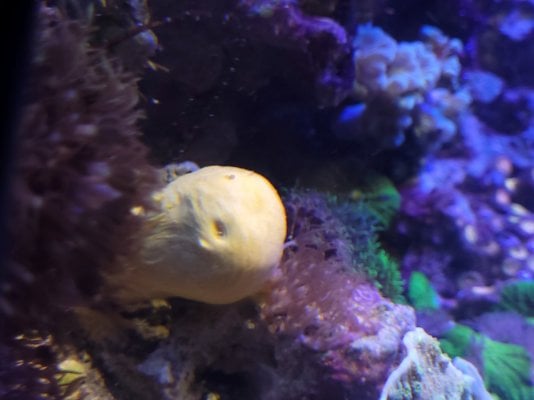 20230417_184207.jpg101.9 KB · Views: 15
20230417_184207.jpg101.9 KB · Views: 15
Upvote
0
ISpeakForTheSeas
2500 Club Member
- Review score
- +0 /0 /-0
R2R Supporter
R2R Excellence Award
- Joined
- Nov 22, 2021
- Messages
- 3,058
- Reaction score
- 3,640
- Review score
- +0 /0 /-0
- Location
- United States
Chicken Liver Sponge color varies depending on how much light it's exposed to, as it has photosymbionts like corals do. From what I've heard, the more light, the more yellow/orange and less white/green the color.I think it isn't Chicken liver sponge because this sponge is totally yellow, mayby a little orange.
Upvote
0
Okay then it is possible that is chicken liver sponge . I am going to start dosing phytoplancton to my tank so it should grow faster and I will see in what shape it will grow..
. I am going to start dosing phytoplancton to my tank so it should grow faster and I will see in what shape it will grow..
Upvote
0
ISpeakForTheSeas
2500 Club Member
- Review score
- +0 /0 /-0
R2R Supporter
R2R Excellence Award
- Joined
- Nov 22, 2021
- Messages
- 3,058
- Reaction score
- 3,640
- Review score
- +0 /0 /-0
- Location
- United States
Sorry, I should have responded to this first: what magnification is your microscope at for those close up pics that show the clear tubes in them? (I ask because if those are the spicules, then the sponge is definitely not a chicken liver sponge.)But I took a sample of sponge and did some photos under microscope. Maybe this will help discover something about this sponge.
Upvote
0
ISpeakForTheSeas
2500 Club Member
- Review score
- +0 /0 /-0
R2R Supporter
R2R Excellence Award
- Joined
- Nov 22, 2021
- Messages
- 3,058
- Reaction score
- 3,640
- Review score
- +0 /0 /-0
- Location
- United States
Yeah, the spicules are the wrong shape to be Chicken Liver Sponge then. Unfortunately, I don't know what kind of sponge you have though.I have optical microscope. Two photos(3,7) are made under 40x magnification and other under 100x
Upvote
0
On the basis of microscopic photos, are you able to tell whether it is a silicon or calcium sponge?Yeah, the spicules are the wrong shape to be Chicken Liver Sponge then. Unfortunately, I don't know what kind of sponge you have though.
Upvote
0
ISpeakForTheSeas
2500 Club Member
- Review score
- +0 /0 /-0
R2R Supporter
R2R Excellence Award
- Joined
- Nov 22, 2021
- Messages
- 3,058
- Reaction score
- 3,640
- Review score
- +0 /0 /-0
- Location
- United States
Supposedly you can tell using a scanning electron microscope (brighter spicules are calcium based), but it's not a surefire thing.On the basis of microscopic photos, are you able to tell whether it is a silicon or calcium sponge?
The below is one way you can tell if it's silica or calcium carbonate based:
" 2. Draw some 8% HCl (hydrochloric acid) under the coverslip. Keep your focus on an individual spicule while you do this and watch its response to the acid. HCl reacts with calcium carbonate to form soluble calcium chloride and gaseous carbon dioxide so that the spicule disappears. Silicon does not react with HCl and remains unaffected."
Also, if you want to get a better pic of the spicules (no guarantees it would help get an ID), the following may help:
"If sponge samples are present in the laboratory, use bleach to digest small pieces on slides and examine for spicules.
1. Place a small piece of sponge on a slide and add a drop or two of bleach. Let it sit until bubbles cease to form. The bleach oxidizes the organic material to carbon dioxide and water but leaves the mineral spicules intact. Add a coverslip, remove the excess bleach, and examine the preparation for spicules with the compound microscope at 40X. Go to higher power, if needed, to study the spicules. "
Source for both quotes above:
Porifera
biosurvey.ou.edu
Upvote
0
Thanks for the instruction. I will maybe try to do oxidazing tomorrow. Today i did some pictures of the sponge undwater so it may help to identify. Unfortunately i can't do photos under electron microscope and other complicated science things, because i am only a student and I have good quality optical microscope with 1000x maximal magnification. So today i did photos of smaller sample and I believe they are in better quality. What is ineresting on 3. and 4. picture is transparent structure which looks very characteristically and is made of something hard. I found a group of this structures (5.) on the surface of the sponge. Btw I have this sponge for about 3 years and I remind myself it sometimes has darker spots on the surface.What it is?Btw I think it can be helpful information that i get this sponge from local reef store which usually imports stuff from Kenia/Indenesia/Australia and i think this sponge was addition to coral order from exporter so it may be from this parts of the world.Supposedly you can tell using a scanning electron microscope (brighter spicules are calcium based), but it's not a surefire thing.
The below is one way you can tell if it's silica or calcium carbonate based:
" 2. Draw some 8% HCl (hydrochloric acid) under the coverslip. Keep your focus on an individual spicule while you do this and watch its response to the acid. HCl reacts with calcium carbonate to form soluble calcium chloride and gaseous carbon dioxide so that the spicule disappears. Silicon does not react with HCl and remains unaffected."
Also, if you want to get a better pic of the spicules (no guarantees it would help get an ID), the following may help:
"If sponge samples are present in the laboratory, use bleach to digest small pieces on slides and examine for spicules.
1. Place a small piece of sponge on a slide and add a drop or two of bleach. Let it sit until bubbles cease to form. The bleach oxidizes the organic material to carbon dioxide and water but leaves the mineral spicules intact. Add a coverslip, remove the excess bleach, and examine the preparation for spicules with the compound microscope at 40X. Go to higher power, if needed, to study the spicules. "
Source for both quotes above:
Porifera
biosurvey.ou.edu
Attachments
-
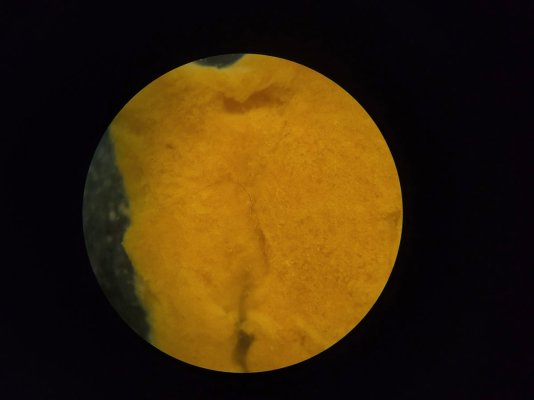 20230418_221721.jpg64.7 KB · Views: 8
20230418_221721.jpg64.7 KB · Views: 8 -
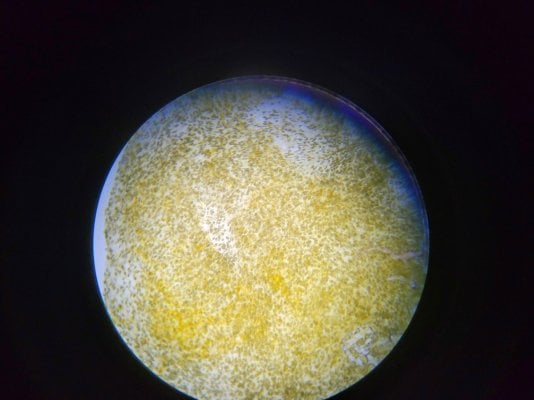 20230418_220953.jpg138.8 KB · Views: 10
20230418_220953.jpg138.8 KB · Views: 10 -
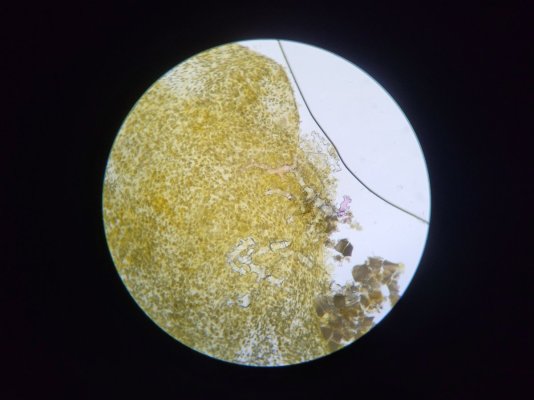 20230418_221058.jpg118.7 KB · Views: 10
20230418_221058.jpg118.7 KB · Views: 10 -
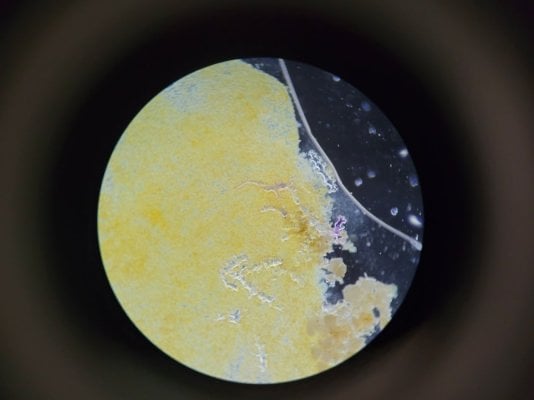 20230418_221138.jpg86.2 KB · Views: 11
20230418_221138.jpg86.2 KB · Views: 11 -
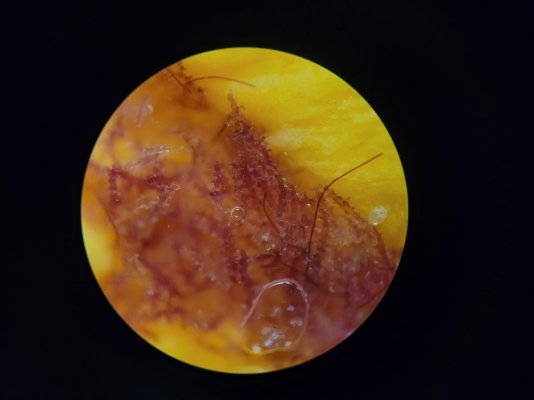 20230418_221908.jpg69 KB · Views: 12
20230418_221908.jpg69 KB · Views: 12 -
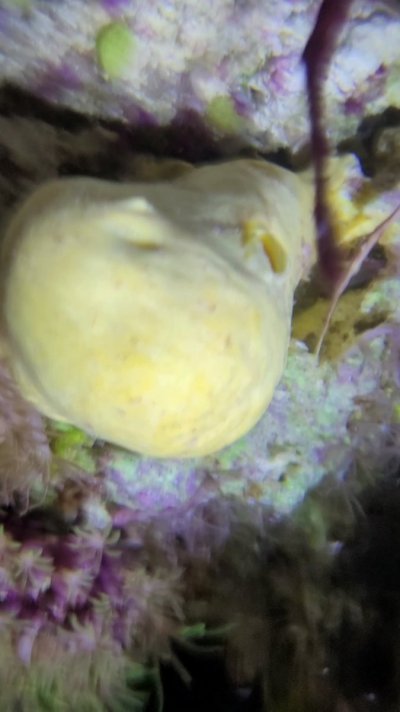 VideoCapture_20230418-231524.jpg85.7 KB · Views: 5
VideoCapture_20230418-231524.jpg85.7 KB · Views: 5 -
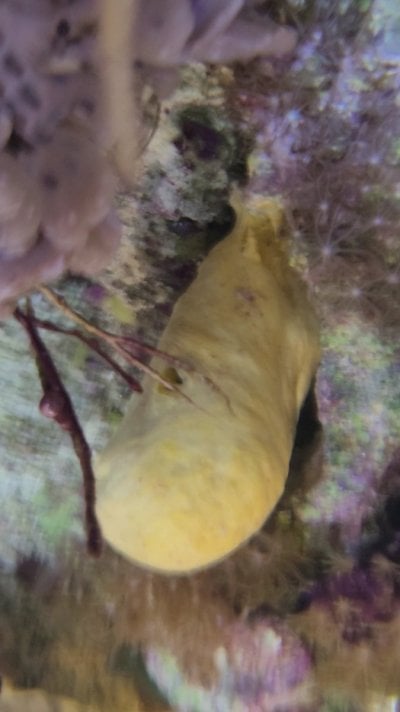 VideoCapture_20230418-231538.jpg88.9 KB · Views: 6
VideoCapture_20230418-231538.jpg88.9 KB · Views: 6 -
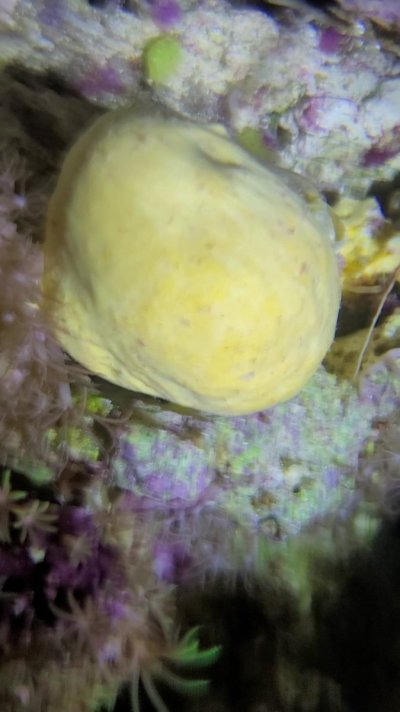 VideoCapture_20230418-231546.jpg98.7 KB · Views: 7
VideoCapture_20230418-231546.jpg98.7 KB · Views: 7 -
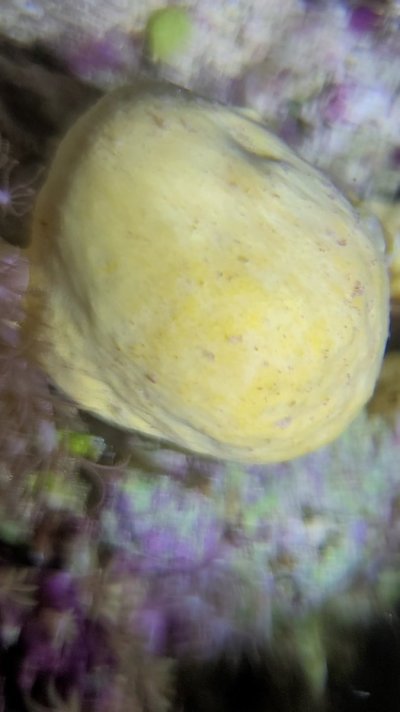 VideoCapture_20230418-231556.jpg81 KB · Views: 7
VideoCapture_20230418-231556.jpg81 KB · Views: 7 -
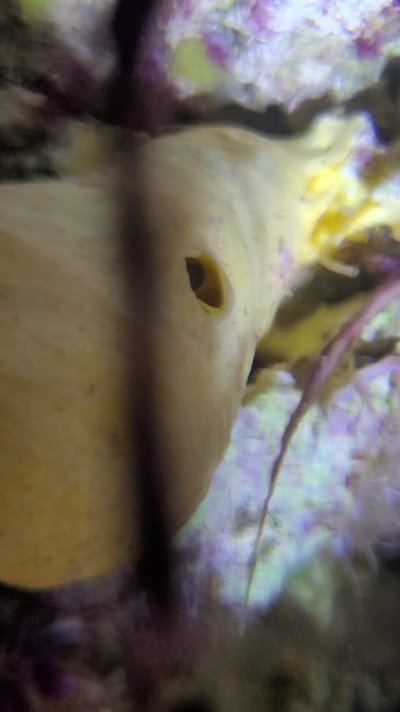 VideoCapture_20230418-231624.jpg78 KB · Views: 8
VideoCapture_20230418-231624.jpg78 KB · Views: 8 -
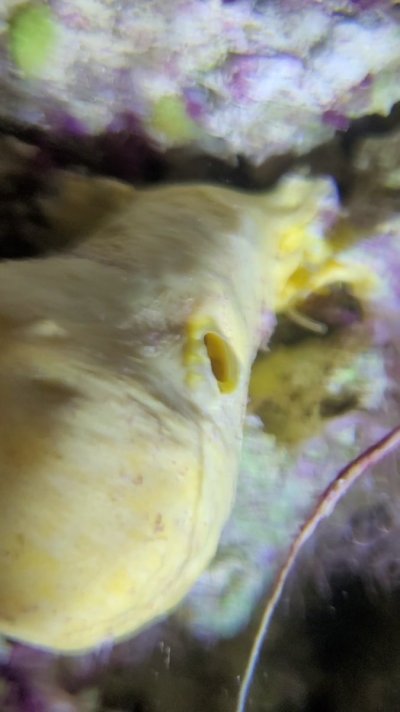 VideoCapture_20230418-231651.jpg81 KB · Views: 5
VideoCapture_20230418-231651.jpg81 KB · Views: 5
Upvote
0
Similar threads
- Replies
- 17
- Views
- 676



